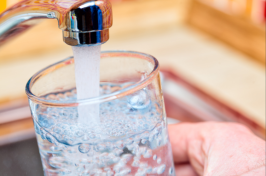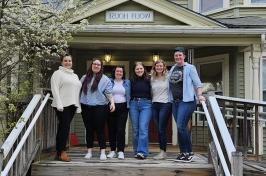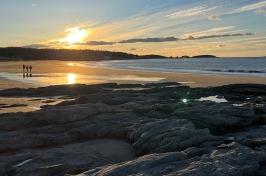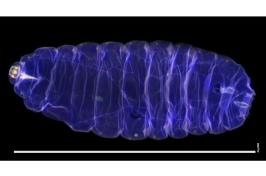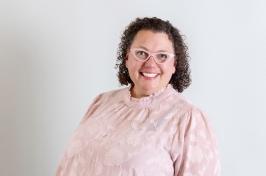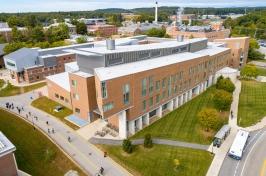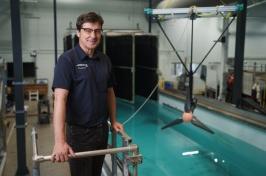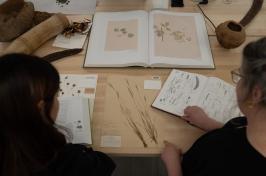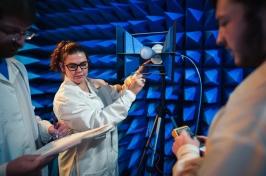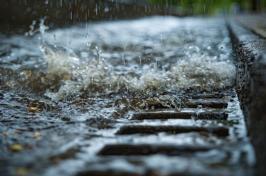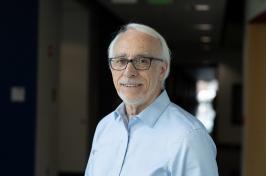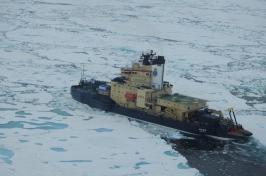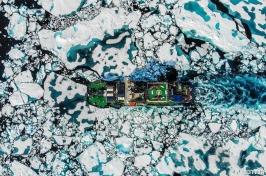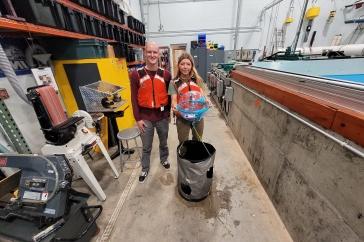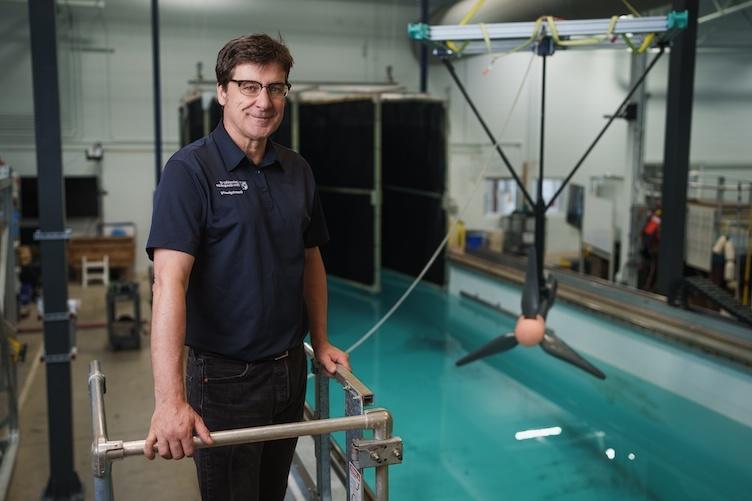
马丁Wosnik, shown here at the combined tow and wave tank in 主要研究's Chase Ocean Engineering Laboratory, 是大西洋海洋能源中心的主任. 阿美科最近从美国石油公司获得了1200万美元的奖金.S. 能源部.
Could the famously predictable tides provide reliable power to coastal communities? What if the same waves that induce queasiness made aquaculture more productive?
The 主要研究-led Atlantic Marine Energy Center (阿美科) is developing the technology and skills that will unlock the power of the sea as a renewable source of energy. 一项新的1200万美元的奖金来自美国国防部.S. 能源部(DOE)将通过资助研究来推进这些努力, 海洋能源产业的设施和劳动力发展.
“海洋中有很多能源——它是丰富的和可再生的.”
“海洋中有很多能源——它是丰富的和可再生的,阿美科董事马丁·沃斯尼克说, 联合国大学机械与海洋工程教授. “We think we can harness some of that energy in a reasonably benign way without impacting the ocean too much.“美国能源部估计,美国的海洋能源资源.S. — from waves, tides, ocean and river currents — is equivalent to nearly 60% of all U.S. 发电.
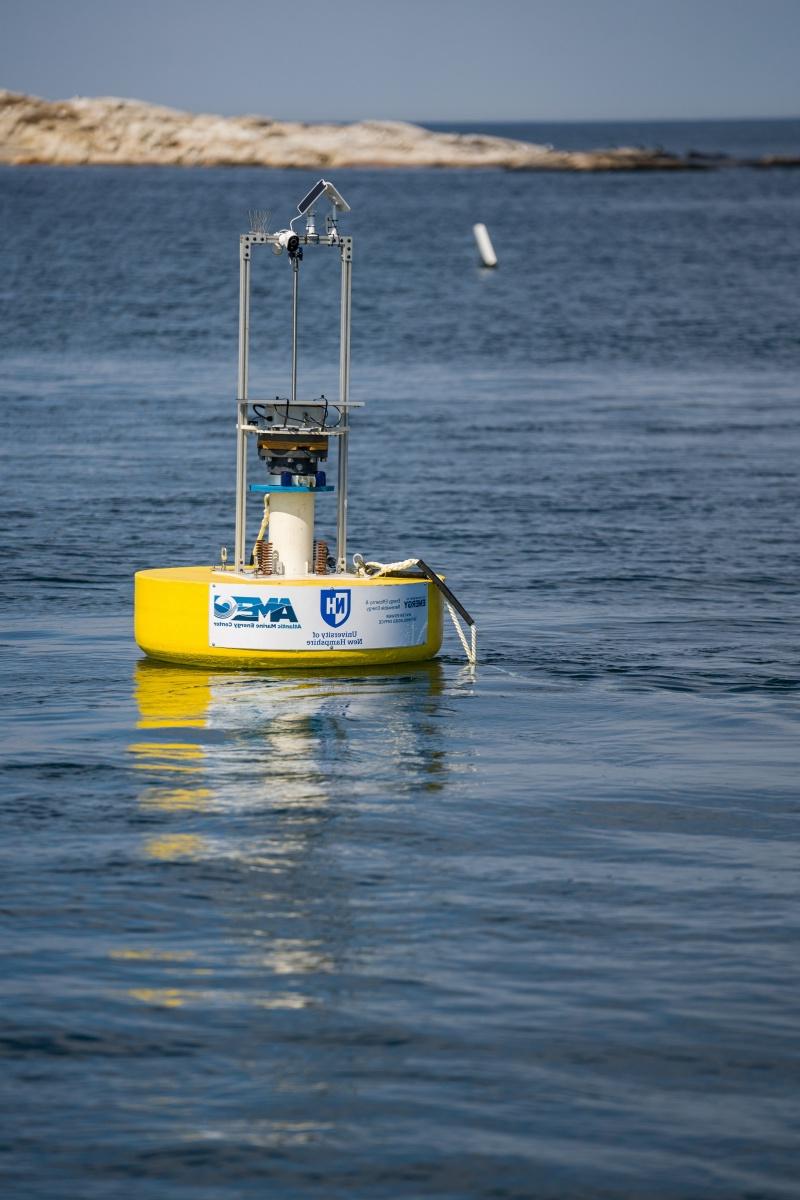
主要研究的波浪动力水泵部署在阿普尔多岛进行海洋测试.
美国能源部为期五年的投资将资助主要研究和at的项目 阿美科 consortium institutions Stony Brook University, Lehigh University and the Coastal Studies Institute.
A series of marine energy summer short courses taught at all four institutions aim to develop a workforce for this growing industry with “boot camps” for senior undergraduates and more in-depth, 研究生高级课程.
“Marine energy development faces a growing need for a highly skilled workforce with an interdisciplinary yet specialized skillset,沃斯尼克说.
此外,与 能源部奖 — funded largely through the Bipartisan Infrastructure Law — 主要研究 will make improvements to its marine energy facilities, which include a combined wave and tow tank and deep engineering tank on campus and the 主要研究 Tidal Energy Test Site on the Piscataqua River beneath the Memorial Bridge between Portsmouth and Kittery, 缅因州. Use of these assets extends beyond 主要研究: 研究ers and technicians from industry and DOE National Labs travel to campus to utilize 主要研究’s unique marine energy research infrastructure.
主要研究 will also launch five research projects, among a total of 12 new projects across 阿美科:
-
Refining models that will test whether assumptions about tidal energy are transferable to other sites (Tom Lippmann, 联合国大学海洋工程中心的教授和主任, 和Wosnik)
-
Modeling and testing wave energy converters for “blue economy” applications such as aquaculture (Arezoo Hasankhani, 电子与计算机工程助理教授, 沃斯尼克和 大卫·弗雷德里克森, professor of ocean engineering and director of the 主要研究 Center for Sustainable Seafood Systems)
-
Improving the performance of 主要研究’s wave-powered water pump for promoting growth rates in macroalgae (kelp) aquaculture (Wosnik, 弗雷德里克松)
-
Improving the design of mooring systems for marine energy and developing new guidelines for marine energy anchor system design (Julie Paprocki, 海洋工程助理教授, 和马吉德·加尤米, 土木及环境工程教授)
-
评估海洋能源系统的可持续性, economic and environmental benefits to microgrids on island communities (Weiwei Mo, 土木与环境工程副教授, Hasankhani和 Wosnik)
除了教师研究人员,六名主要研究博士.D. 学生将参与这些项目.
“Marine energy has unique attributes that make it an attractive energy source,沃斯尼克说. “We are grateful for the 能源部’s continued investment in our expertise at 主要研究 and 阿美科 to help develop it.”
-
写的:
贝斯保梯 | 主要研究营销 | 贝丝.potier@femdomcenter.com | 2-1566









